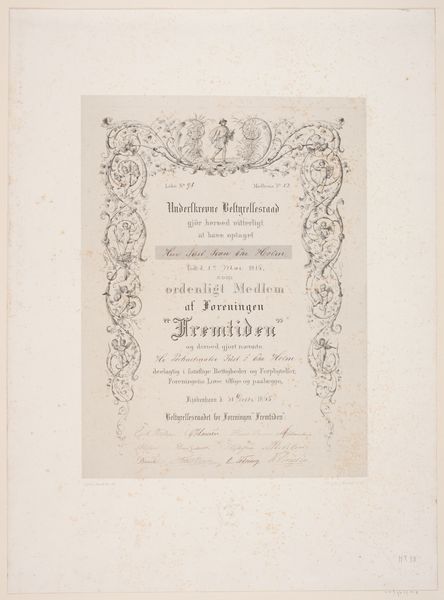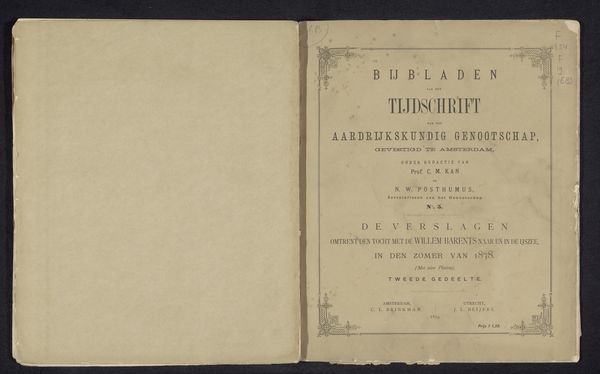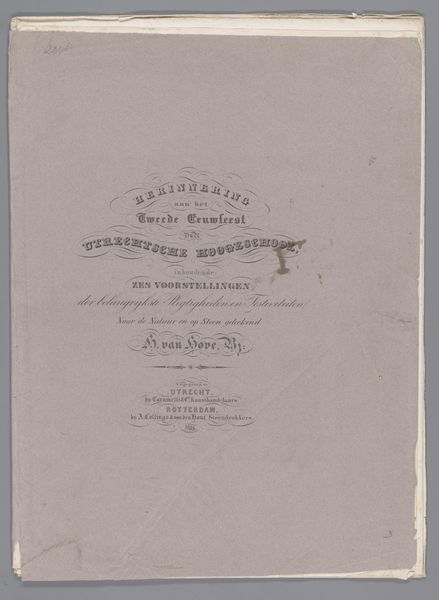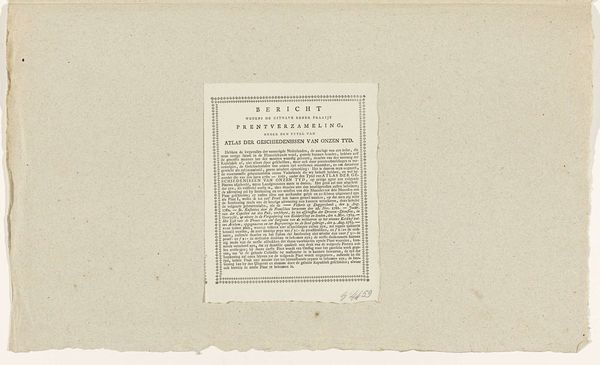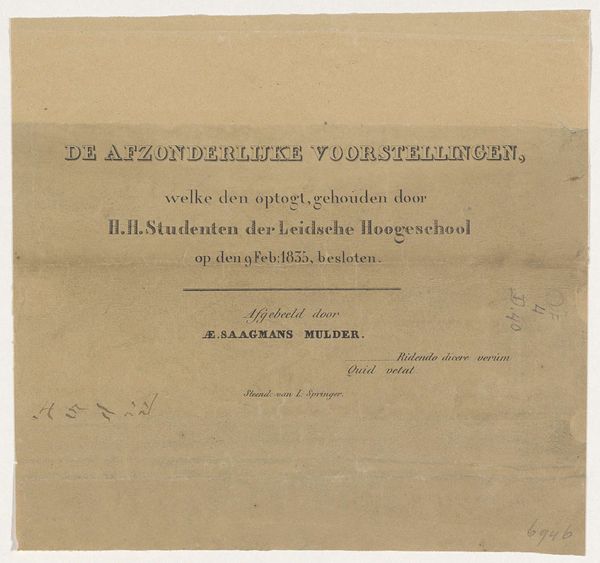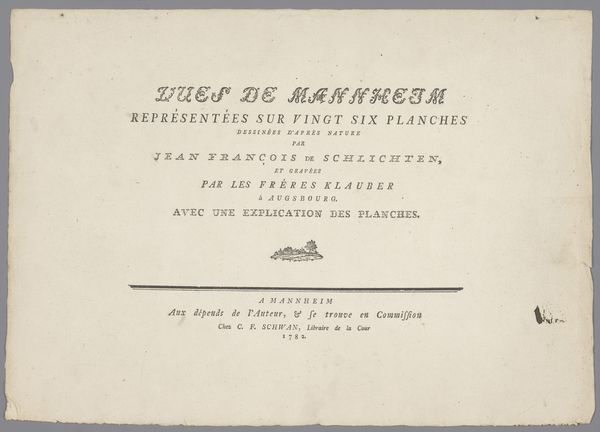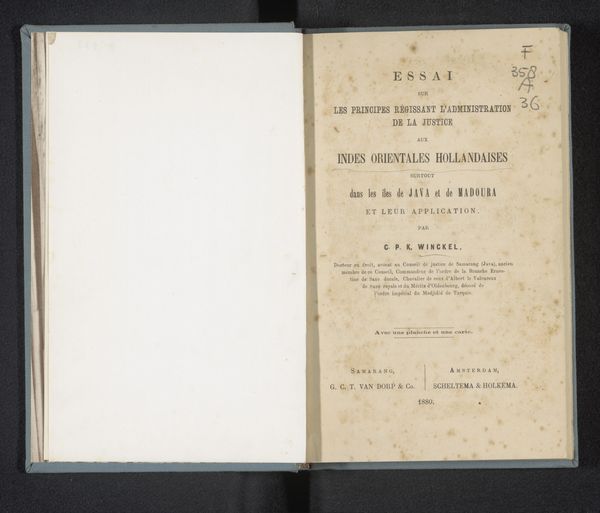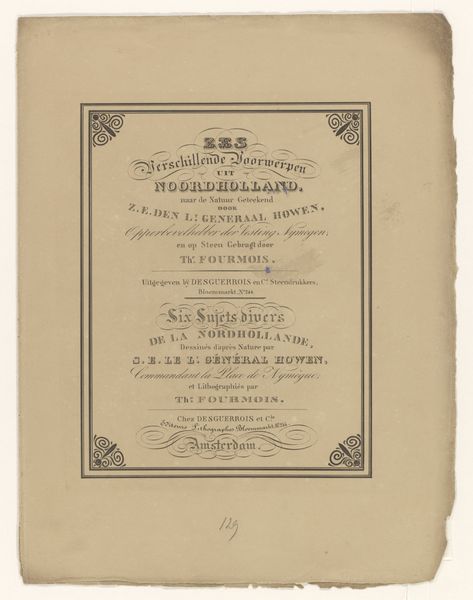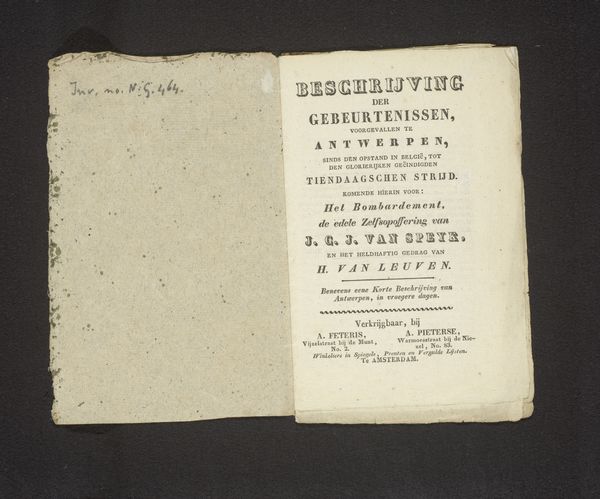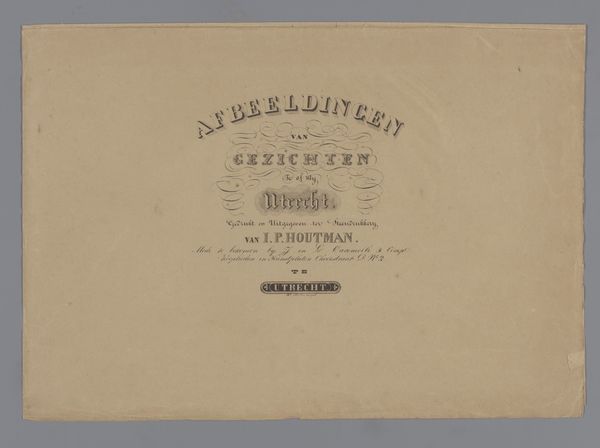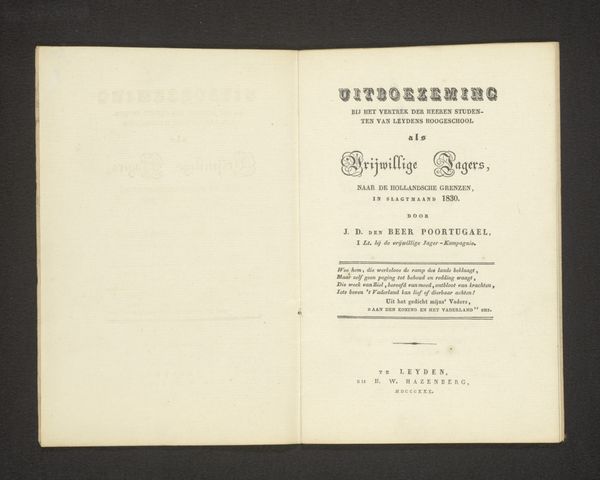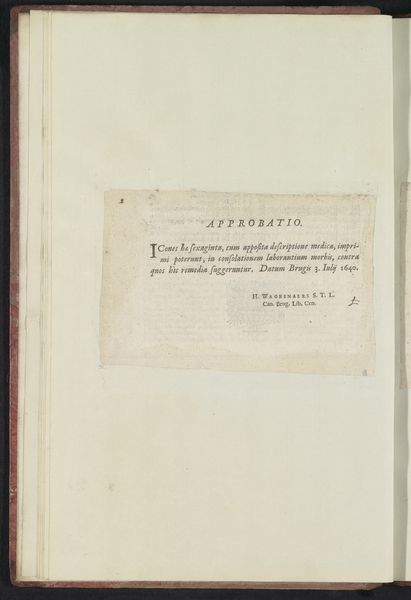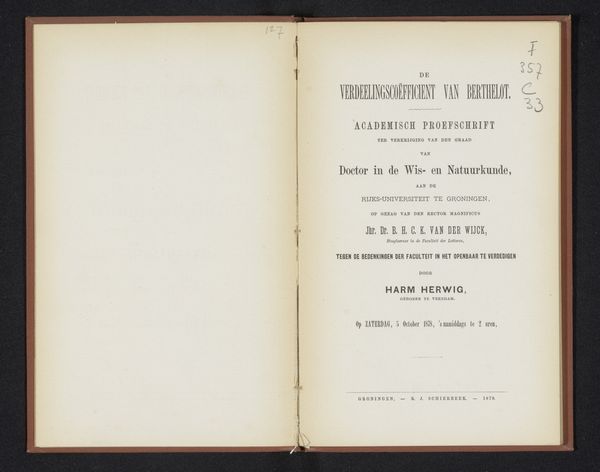
graphic-art, lithograph, print, paper, typography
#
portrait
#
graphic-art
#
dutch-golden-age
#
lithograph
#
ink paper printed
# print
#
old engraving style
#
hand drawn type
#
paper
#
typography
Dimensions: height 575 mm, width 795 mm
Copyright: Rijks Museum: Open Domain
Curator: Here we have “Omslag voor de prent van het overlijden van koning Willem II, 1849,” which translates to "Cover for the print of the death of King William II, 1849." It's a lithograph on paper, created in the same year the King passed away, and it was printed by Belinfante & Co. Editor: What immediately strikes me is the weight of the typography. Those heavy, gothic-inspired fonts, announcing death, lend such a somber gravitas to the page, almost like a royal decree etched in stone. It's very formal. Curator: Yes, and if you look closely, you see that this isn't just a printed announcement. The title block feels almost hand-drawn, with its slightly irregular letterforms giving the piece an intimate quality, as if someone personally crafted each character with care. Editor: Indeed. It evokes that feeling of remembrance, but also perhaps highlights the performative aspect of mourning for a monarch. The dual text in Dutch and French reflects the complicated identity of the Dutch court at the time, no? A desire to appeal to both domestic and international audiences in a moment of national sorrow. Curator: Precisely. The stylized flourishes around the edges feel very 19th century, and echo designs one might expect from luxury items. But here they act like a frame of tears, carefully constructed for public consumption. The paper stock mentioned at the bottom suggests varied price points; mourning for every budget? Editor: Possibly so! Note the price distinction. It tells us that even grief could be commodified; where status mattered even in commemorating the deceased king. Was it seen as better to display sorrow by spending a little extra on "Chineesch" paper? Curator: Interesting to contemplate! While we interpret symbols through different lenses, seeing these lithographs gives us access to both a specific moment of cultural significance and an appreciation of enduring, almost timeless aspects of humanity—ritual, remembrance, even the commodification of feelings. Editor: Yes, and personally, I see it as a beautiful example of how graphic design can function as both historical document and powerful emotional trigger, bridging past and present through carefully chosen symbols and lettering.
Comments
No comments
Be the first to comment and join the conversation on the ultimate creative platform.
